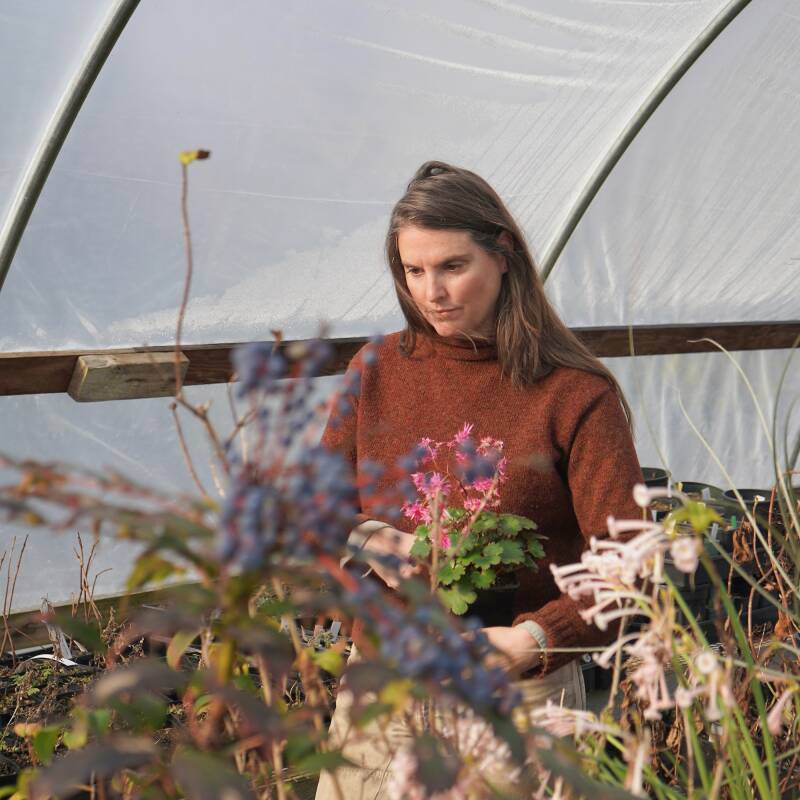Houseplants can bring happiness, a sense of well-being, and visual appeal, but they can also bring complete confusion and frustration when they droop, frizzle, or even expire. This scenario is especially true if your plant parenting skills are not well-honed. That’s where learning from experts comes in, which is why I’ve asked Puneet Sabharwal, CEO and co-founder of the New York plant subscription company Horti, and author of Happy Plant: A Beginner’s Guide to Cultivating Healthy Plant Care Habit, for sage advice on how to troubleshoot the top looming houseplant problems. “I think the most useful thing is understanding that plants crave an approximation of their native environments,” shares Puneet. “Knowing this, it’s easy to intuit how to care for a plant.”

Please keep reading to learn more about how to keep your houseplants happy:
N.B.: Featured photograph by Michael J. Spear via Urban Outfitters, from Still Life with Houseplants: Macramé Artist Emily Katz in Portland, Oregon.
1. Pests and Disease
Puneet explains that common pests like mealybugs, spider mites, and gnats can come into your home through open windows or hitchhike in on newer plants. The solution: Quarantine any new plants before adding them to your existing jungle and keep checking your existing plants closely for any strange markings. He also suggests that when bugs do invade to try insecticidal soaps. Puneet shares, “These are generally an effective and non-toxic way to get rid of pests. However, neem oil which is commonly touted as safe, is practically useless and carries a noxious smell.” He notes that while the physical properties of oil can clog an insect’s breathing pores, you have to douse the tiny troublemakers directly which can be tricky as pests move quickly or can be too small to detect.
2. Water

When your plant’s leaves turn pale yellow and then drop, this could be caused by too much water. The solution: Check the soil before watering to see if the soil is already damp and increase your plant’s exposure to light and heat. Too little water yields similar results: “Plant leaves start to droop and curl. Leaves will also start turning brown around the edges, and succulents will generally shrivel.” The solution: Increase the frequency of watering.
3. Light
Is your pothos a bit pallid? Too little light will turn leaves pale green, cause a plant to lose its variegation, and even cause leaves to fall off. The solution: Increase sunlight exposure by moving your plant closer to an uncovered window and see if the problem resolves. Remember, houseplants can be like Goldilocks and they want it just right, which means adjusting factors until happiness is found.

4. Nutrients
Most houseplants like to be fed, but sometimes the incorrect amount and type of nutrients is given. For example, too much salt, fertilizer, or hard water can burn leaves and turn the tips jet black. Puneet says, “Your plant may show wrinkles or signs of dehydration and you may notice salt accumulate on the pot.” The solution: Puneet recommends repotting your plant in new soil and switching from unfiltered tap water to purified or softened water.
Also, stunted, weak growth can be a sign of insufficient nutrients; plus, the lower leaves may appear to be bruised, yellow, and drooping. Puneet explains: “In houseplants, this is caused by nitrogen, phosphorus, and potassium deficiencies.” The solution: Carefully follow the instructions on your fertilizer of choice and give your plant a feeding. Puneet recommends DynaGro or Good Dirt Plant Food. He adds, “Always go with liquid fertilizers because they are more effective than pellet fertilizers or slow-release fertilizer spikes.”
5. Temperature
A plant can actually suffer from overheating and while it won’t get sweaty, it can, according to Puneet, “resemble a sautéed vegetable.” The signs of too much heat are that your plant dries out faster than normal and starts exhibiting the look of a thirsty droopy plant. The solution: Relocate your struggling plant to a cooler spot or a room with stable conditions.
For more on caring for houseplants, see:
- A Greener Indoor Garden: 9 Best Practices for Sustainable Houseplants
- Winter Is Coming: How to Care for Houseplants When They Go Dormant
- Houseplants: How to Decode the Info on Plant ID Tags








Have a Question or Comment About This Post?
Join the conversation